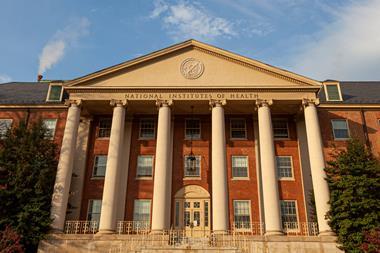Chemists count the cost of last-minute spending cuts
Chemists are counting the cost of significant inroads into US government science spending.
The $555 billion Consolidated Appropriations Act of 2008, signed into law by President Bush on 26 December, sets out government agency budgets for the coming year.
But it reverses two years of successful lobbying to bolster federal support for basic research, and ignores goals set by Bush’s own American Competitiveness Initiative (ACI) and by Congress to double funding for key scientific agencies over the next seven years.
’Chemistry is part of the complex of physical sciences that were targeted for increases that will not occur,’ Bush’s science advisor, John Marburger, told Chemistry World. ’Those hopes will not be realised under this budget.’
The consolidated budget provides below-inflation increases for the National Science Foundation’s research accounts, as well as the laboratories of the National Institute of Standards and Technology. It gives a real-term increase of only 3.5 per cent to the Department of Energy’s (DOE) Office of Science, and a mere 0.5 per cent increase to the National Institutes of Health (NIH).
Furthermore, cuts within DOE are expected to trigger staff losses on x-ray synchrotron light sources at the department’s national labs, and reductions in beam time. This could seriously damage academic and industry chemistry programs that use x-rays for structural and reaction pathway studies.
Chilling effect
The new budget will have a chilling effect not only on chemistry, but also on the entire US scientific enterprise, according to the American Chemical Society (ACS). ’If we don’t do anything to bring the funding up to what is needed to keep the US as an effective global competitor, that will have a really negative repercussion not just for chemistry, but the overall US economy as well,’ warned ACS spokesperson Glenn Ruskin.
Also of concern to the ACS is the inclusion of language in the funding bill that will require NIH-funded researchers to submit their peer-reviewed manuscripts to the agency’s free digital archive of biomedical and life sciences literature, known as PubMed Central. The manuscripts will have to be made publicly available within twelve months of publication.
The provision, which makes mandatory NIH’s currently voluntary public access policy, is controversial. The language met significant resistance from publishers and scholarly societies such as the ACS when it was included in an earlier appropriations bill that Bush vetoed in November 2007 (see ’Chemistry’s open access dilemma’, Chemistry World, December 2007, p12).
Ruskin says that the most responsible policy would be to put the manuscripts into a universal format, such as Adobe’s PDF, and give it to NIH to post online. ’But what NIH is trying to do with these final peer reviewed articles has become cloudy,’ he said. ’The agency is adding things and tweaking things ... it has moved beyond a copyright issue to become an intellectual property issue.’
Although the 2008 budget has proved disappointing to the US science community, a light is on the horizon. The White House, which says it still supports the ACI funding targets, is due to propose its 2009 budget in February.
Rebecca Trager, US correspondent for Research Day USA







No comments yet